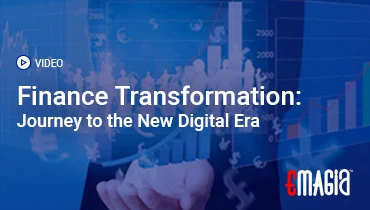1. Introduction to Benefits of Autonomous Finance in A/R Collections
Autonomous finance is revolutionizing the world of accounts receivable (A/R) collections. By leveraging technologies like artificial intelligence (AI), machine learning (ML), and robotic process automation (RPA), businesses are dramatically improving efficiency, accuracy, and cash flow. This blog explores how autonomous finance enhances A/R processes and provides tangible benefits for finance leaders.
2. Key Advantages of Using Autonomous Finance in Accounts Receivable Management
2.1. Greater Efficiency in A/R Collections
Automation replaces manual tasks such as sending reminders, tracking payments, and reconciling invoices—freeing up finance teams and accelerating the cash cycle.
2.2. Enhanced Accuracy and Reduced Errors
By automating data capture and reconciliation, businesses minimize common human errors in billing and collections, improving accuracy and customer trust.
2.3. Lower Days Sales Outstanding (DSO)
Autonomous finance tools help businesses collect payments faster by using AI-driven prioritization and automated workflows, significantly reducing DSO.
2.4. Increased Cash Flow and Liquidity
Faster collections result in improved liquidity, allowing companies to reinvest and operate with greater financial stability.
2.5. Cost Savings and Reduced Headcount Necessities
With automation, companies can manage more invoices with fewer people, cutting operational costs while maintaining productivity.
2.6. Improved Cash Flow Forecasting
Real-time analytics provide finance teams with better visibility into receivables, enabling more accurate and timely forecasting.
2.7. Strengthened Security and Compliance
Automated processes reduce the risk of fraud and ensure consistent compliance with regulatory requirements.
2.8. Proactive Customer Engagement
AI enables personalized, timely communication with customers, improving engagement and reducing friction in the collections process.
2.9. Conversion of A/R into Strategic Assets
Finance teams can shift from tactical tasks to strategic planning by leveraging insights from autonomous A/R processes.
2.10. Continuous Learning & Smarter Collections
AI models learn from past data and optimize dunning strategies, payment schedules, and customer segmentation for better outcomes.
3. How Autonomous Finance Transforms A/R Collections Workflows
3.1. Automated Invoice Generation & Dynamic Dunning
From invoice creation to payment reminders and escalations, automation streamlines the entire workflow.
3.2. AI-Powered Risk Scoring and Prioritization
Accounts are scored based on credit risk and payment behavior to prioritize collection efforts intelligently.
3.3. Cash Application & Reconciliation Automation
AI auto-matches payments with invoices using remittance data, significantly reducing manual intervention.
3.4. Real-Time Dashboards & Metrics
Finance teams can monitor performance in real time, making data-driven decisions to optimize A/R operations.
4. Business Impact: ROI & Strategic Gains
4.1. Measurable ROI in 6–12 Months
Most companies report seeing cost savings and improved collection efficiency within the first year of implementation.
4.2. Bad-Debt Reduction and Risk Mitigation
Timely interventions and smarter risk assessments lead to fewer defaults and write-offs.
4.3. Staff Productivity & Strategic Redeployment
By automating repetitive tasks, finance teams can focus on high-value activities like dispute resolution and relationship management.
4.4. Competitive Advantage
Faster, smarter collections improve customer experience and allow businesses to scale more effectively than competitors relying on manual processes.
5. Implementation Best Practices
5.1. Integrate with ERP, CRM, Payment Gateways
Seamless integration ensures data flows smoothly across platforms, enabling end-to-end automation.
5.2. Define Metrics & Track KPIs
Key performance indicators like DSO, recovery rate, and aging buckets help track the effectiveness of autonomous finance.
5.3. Phased Roll-Out Strategy
Start small—automate one process at a time before scaling to full A/R automation for better adoption and control.
5.4. Continuous Monitoring & Feedback
Regular audits and feedback loops are critical for refining processes and maximizing automation benefits.
6. Challenges in Autonomous A/R Finance
6.1. Data Quality & System Integration
Automation relies on clean, consistent data and tight integration between financial systems.
6.2. Change Management & Team Training
Adopting autonomous finance requires cultural change and upskilling of finance teams.
6.3. Handling Complex Exceptions
Human intervention may still be needed for exceptions like disputes and non-standard payment terms.
6.4. Vendor Selection & Customization Needs
Select platforms that are scalable, customizable, and offer strong AI capabilities for future growth.
7. How Emagia Helps: Autonomous Finance in Action
7.1. GiaDocs AI: Smart Document Processing
Emagia’s GiaDocs AI automates the capture, validation, and integration of documents into finance systems, reducing errors and processing time.
7.2. Gia AI & GiaGPT: Intelligent Virtual Assistants and Forecast-Driven Automation
Gia AI drives autonomous decisions, prioritizing outreach and providing intelligent suggestions for collections based on customer behavior.
7.3. Real-Time Analytics & Autonomous Decisions
Real-time dashboards deliver insights that finance leaders can use to guide strategy and respond to risk proactively.
7.4. Proven Outcomes & Case Examples
Global enterprises using Emagia report substantial reductions in DSO, increased automation coverage, and improved customer relationships.
FAQs
What is autonomous finance in A/R collections?
It refers to the use of AI, ML, and automation to manage A/R processes without manual effort—improving accuracy and efficiency.
How does autonomous finance improve DSO?
By automating tasks, prioritizing accounts, and ensuring timely follow-ups, companies collect payments faster and reduce DSO.
Can small or mid-size businesses benefit?
Yes, many cloud-based autonomous finance solutions are scalable and affordable for smaller enterprises.
How long to see ROI?
Most organizations begin to see measurable returns within 6–12 months of deploying autonomous A/R solutions.
Is customer experience affected?
Yes—positively. Personalized, timely communication and fewer billing errors lead to better relationships.
What are key KPIs to track?
Important metrics include DSO, recovery rate, aging balances, bad-debt write-offs, and forecast accuracy.
Conclusion
The benefits of autonomous finance in A/R collections are clear: faster payments, better forecasting, reduced costs, and improved customer satisfaction. Businesses looking to modernize their financial operations should consider AI-driven A/R automation platforms like Emagia to lead the way forward.



